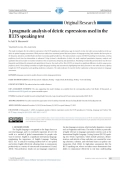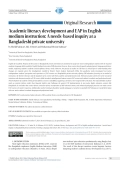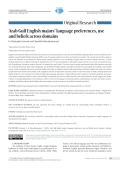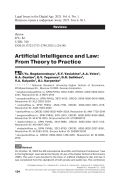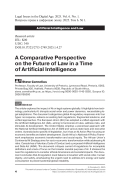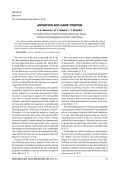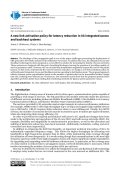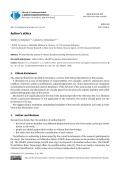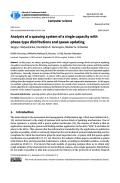This study investigates the role of deictic expressions in the IELTS speaking test, addressing a gap in research on how test-takers across proficiency levels use deixis in spoken language assessment. While previous studies have examined general discourse features in language testing, little attention has been given to the frequency, functions, and distribution of deixis in assessing spoken proficiency. The study analysed a corpus of 30 IELTS speaking test transcripts, covering proficiency levels from low-intermediate to advanced. Using Levinson’s classification of deixis, the study employed quantitative frequency analysis and qualitative discourse analysis to examine variations in the use of personal, temporal, and spatial deixis. The findings revealed that personal deixis was the most frequently used, followed by temporal and spatial deixis. However, the results of One-Way ANOVA test showed no significant differences in deixis usage across proficiency levels. These findings contribute to English language teaching and assessment by highlighting how deixis functions in test-taker discourse, offering insights for IELTS preparation and speaking proficiency evaluation. The study indicates the need for further exploration of discourse features in language assessment.
English for Academic Purposes (EAP) courses in Bangladeshi private universities are positioned to equip non-native undergraduate students with the required academic language skills needed for English Medium Instruction (EMI) education. However, these courses have frequently adopted generic language proficiency models, neglecting students’ academic and disciplinary literacy needs. Moreover, the paucity of studies on EAP leaves a critical lapse in understanding what changes are required, given this misalignment. Guided by Brown’s Needs Analysis framework (2016), this qualitative study investigated non-native undergraduate students’ perceptions and experiences of EAP courses at a Bangladeshi private university offering EMI education, focusing on its method of instruction, the barriers they face and the alignment of its content with their academic and professional needs. Thematic analysis of forty-five semi-structured interviews and document analysis of EAP course syllabi revealed a misalignment between current EAP courses and students’ academic and professional needs. The development of academic writing for disciplinary courses is unfulfilled, suggesting a need for a more targeted EAP curriculum. The study identifies students’ needs as systemic failures rather than linguistic deficits and challenges the generic EAP implementation in non-native higher education contexts like Bangladesh. It concludes that context-driven curricular reform, incorporation of skill-oriented content, and enhanced pedagogic practices can make current EAP courses to be needs-responsive. Additionally, teacher training in discipline-specific pedagogy is crucial for an equitable EAP redesign as it would better align with non-native students’ academic language and professional needs.
English is the dominant medium of instruction for numerous university programmes across the Arab Gulf. While a growing body of research examines learners’ attitudes towards English Medium Instruction (EMI), issues of language preference/use have received far less attention. The research reported here sought to redress this imbalance by examining the domain-based language preferences, use, and beliefs of English majors at Oman’s national university. A mixed methods approach was employed involving the administration of a 35-item questionnaire to 120 English majors and one-on-one semi-structured interviews with 13 participants. Descriptive analysis, Pearson’s chi-squared test, and Cramer’s V test were used to examine questionnaire data, while interview transcripts were analysed thematically before data triangulation was performed. Findings indicate respondents preferred and used English for academics and intended careers, Arabic for familial interactions, and both English and Arabic or English by itself to talk about feelings and beliefs. English and Arabic were almost equally preferred for identity representation, with a significant minority of respondents expressing a desire to study their majors in Arabic. Although gender and English proficiency were not found to be related to beliefs about language importance, Arabic proficiency had a moderate, statistically significant association. Arab students employing English to express cultural beliefs and identities has not been widely reported in the existing literature. Results suggest that, despite evidence of emerging bilingualism in some domains, reform to tertiary-level language of instruction policies and planning in the region and similar contexts worldwide, including by offering Arabic Medium Instruction options, may be necessary to ensure effective education provision.
On October 18, 2024 the XIII International Scientific and Practical Conference “Law in the Digital Age” was held at the Faculty of Law of the Higher School of Economics (HSE). This year it was devoted to the topic of artificial intelligence (AI) and law. It was considered from the standpoint of both private and public law. The conference covered the issues of the civil law regime of artificial intelligence technologies and objects created with its use, artificial intelligence and intellectual property law, as well as the topic of generative content and protection of the interests of copyright holders. The topic of regulation and self-regulation of artificial intelligence, including artificial intelligence in Legal Tech, is highlighted. Introduction of Artificial Intelligence Technologies in Labor Relations: Successes, Failures, Prospects Criminal Law Protection of Digital Economy and Finance Entities Using Elements of Artificial Intelligence. Thus, the conference attempted a comprehensive discussion of the role of law in the development of AI technologies. This approach made it possible to show the relationship between the methods of legal regulation in this area, their interaction to create conditions for the development of AI technologies. The conference raised both practical and theoretical issues of the development of law in the new conditions, as well as the problems of the development of legal education.
The article explores the impact of AI on legal systems globally. It highlights how technology, particularly AI, disrupts social order and power dynamics, necessitating legal adaptations. The document categorizes global AI regulatory responses into four types: no response, reliance on existing tech regulations, fragmented solutions, and unified approaches. The European Union (EU) has adopted a unified approach with the Artificial Intelligence Act (AIA), aiming to harmonize AI rules, address risks, and stimulate AI development. The United States employs a piecemeal approach with the National Artificial Intelligence Act of 2020 and various state laws and executive orders. Australia lacks specific AI legislation, but it has an AI Action Plan focusing on economic benefits and talent development. South Africa’s National AI Policy Framework emphasizes economic transformation and social equity. The African Union’s Continental AI Strategy aims for socio-economic transformation while addressing AI risks. Canada has a Voluntary Code of Conduct and a proposed Artificial Intelligence and Data Act (AIDA). The document critiques current AI regulations for incomplete definitions and a lack of focus on the broader societal purpose of AI. It stresses the need for regulations to consider ethical dimensions and societal impacts. The document concludes that AI regulation must balance innovation with social order, human dignity, and safety, emphasizing the urgent need to address AI’s energy and water consumption to prevent potential global instability.
The authors consider animation and game tourism as one of the important areas of tourism. During the study, it was found out that animation and gaming activities are actively used in modern tourism. By improving the quality of tourist services and expanding the number of services (including animation and game tourism), the tourism services sector is actively developing and its income is growing.
The requirements for reliability and durability are increasing every year for the critical elements of bridge structures, as there is a steady increase in the number of vehicles and volumes of cargo movement. Such structural elements include bearing parts of spans of bridges, which perceive loads from the mass of spans, transport cargo and compensate for deformations from thermal expansion and contraction. Antifriction polymeric materials are used in all newly developed designs of bearing parts. The reliability and durability of bridges as a whole depend on the physical, mechanical and operational properties of such materials. The change in the length of spans due to temperature fluctuations is carried out due to sliding along the polymer layers. The article presents a critical analysis of the polymer and metal-polymer materials used as sliding supports. A review and analysis of standardized anti-friction materials for possible use as sliding layers in the bearing parts of bridges have been carried out. The most promising fluoroplastic composite materials capable of operating without lubricant are presented. An analysis of metal-fluoroplastic sheet materials was made, new metal composites were proposed, in which various mesh materials with a high polymer content in the working layer are used as an anti-friction layer. Such materials can be used as guides for the moving bearing parts of the bridge without the use of lubricants. It is shown that the use of the described modern wear-resistant anti-friction materials will significantly increase the bearing capacity and service life of sliding bearings.
An increase in service life of equipment and plants (objects) in electric power systems makes it more appropriate to relate the organization of a system of maintenance service and restoration of wear and tear to their technical condition. This, in turn generates the need to quantitatively estimate the indices of their individual reliability. There can be no data on failures and defects of concrete objects, therefore, in practice we often calculate generalized reliability indices. An intuitive understanding of the varied significance of varieties of attributes is reflected by classifying statistical data for some varieties of attributes. For example, they can be classified according to voltage class, design, service life, etc. At the same time, the question on the appropriateness of the statistical data classification is not considered. Initial assumptions of known methods and criteria of checking if it is expedient to classify the statistical data on failures of the electric power system objects in most cases are unacceptable, since they are not relevant to this data set. We have developed a new method and an algorithm to assess the appropriateness of the statistical data classification. Their novelty lies in the application of a fiducial approach to estimation of critical values of a sample from a set of multivariate statistical data.
The blockage of the propagation path is one of the major challenges preventing the deployment of fifth-generation New Radio systems in the millimeter-wave band. To address this issue, the Integrated Access and Backhaul technology has been proposed as a cost-effective solution for increasing the density of access networks. These systems are designed with the goal of avoiding blockages, leaving the question of providing quality-ofservice guarantees aside. However, the use of multi-hop transmission negatively impacts the end-to-end packet latency. In this work, motivated by the need for latency reduction, we design a new link activation policy for self-backhauled Integrated Access and Backhaul systems operating in half-duplex mode. The proposed approach utilizes dynamic queue prioritization based on the number of packets that can be transmitted within a single time slot, enabling more efficient use of resources. Our numerical results show that the proposed priority-based algorithm performs better than existing link scheduling methods for typical system parameter values.
For one-dimensional inhomogeneous (with respect to the spatial variable) linear parabolic equations, a combined approach is used, dividing the original problem into two subproblems. The first of them is an inhomogeneous one-dimensional Poisson problem with Dirichlet–Robin boundary conditions, the search for a solution of which is based on the Chebyshev collocation method. The method was developed based on previously published algorithms for solving ordinary differential equations, in which the solution is sought in the form of an expansion in Chebyshev polynomials of the 1st kind on Gauss–Lobatto grids, which allows the use of discrete orthogonality of polynomials. This approach turns out to be very economical and stable compared to traditional methods, which often lead to the solution of poorly defined systems of linear algebraic equations. In the described approach, the successful use of integration matrices allows complete elimination of the need to deal with ill-conditioned matrices.
The second, homogeneous problem of thermal conductivity is solved by the method of separation of variables. In this case, finding the expansion coefficients of the desired solution in the complete set of solutions to the corresponding Sturm–Liouville problem is reduced to calculating integrals of known functions. A simple technique for constructing Chebyshev interpolants of integrands allows to calculate the integrals by summing interpolation coefficients.
We describe the system of ethical disclaimers being introduced in the journal.
In this paper, we study a queuing system with a single-capacity storage device and queue updating. An update is understood as the following mechanism: an application that enters the system and finds another application in the drive destroys it, taking its place in the drive. It should be noted that systems with one or another update mechanism have long attracted the attention of researchers, since they have important applied significance. Recently, interest in systems of this kind has grown in connection with the tasks of assessing and managing the age of information. A system with a queue update mechanism similar to the one we are considering has already been studied earlier in the works of other authors. However, in these works we were talking about the simplest version of the system with Poisson flow and exponential maintenance. In this paper, we consider a phase-type flow and maintenance system. As a result of our research, we developed a recurrent matrix algorithm for calculating the stationary distribution of states of a Markov process describing the stochastic behavior of the system in question, and obtained expressions for the main indicators of its performance.
